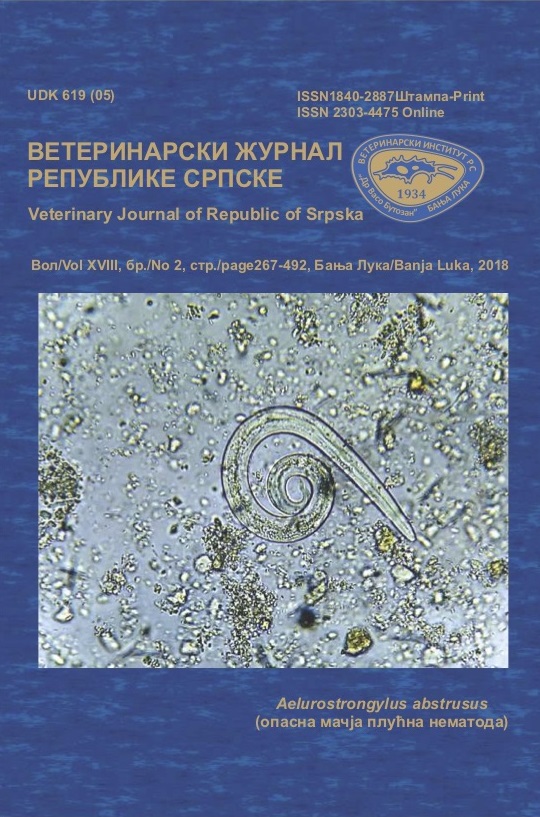FATTY ACID COMPOSITION OF LIVNO CHEESE
DOI:
https://doi.org/10.7251/VETJEN1802446HAbstract
During its 132-year production, the characteristics of Livno cheese
changed, first because of the transition from sheep to cow’s milk, or their mixture.
Livno cheese is specific primarly due to the presence of a specific plant cover in
mountain area, climatic conditions and milk of autochthonous sheep. The purpose
of this work is to determine the fatty acid composition of Livno cheese, with special
reference to the contenct of bioactive components that have a positive effect on
human health, and to tracking any changes in their content depending on the
sampling or feeding period. For the production of Livno cheese, which was sampled
after 90 days of ripening at ambient conditions, sheep’s milk was used, mentioning
that the cow’s milk was added in proportion (80:20), which is commonly used in the
traditional production of this cheese. Samples were analyzed by gas chromatography
in As Vitas laboratory in Oslo Innovation Center, according to the procedure
described in Luna and al. (2005). A total of 24 fatty acids were determined during the
three sampling periods (July, August and September) In cheese samples, saturated
fatty acid content (SFAs) was higher in relation to monounsaturated(MUFAs) and
polyunsaturated (PUFAs) fatty acids. The fatty acid composition of the tested cheese
samples is specific, because it contains fatty acids which have been proven to have
an extremely beneficial effect on human health.

